Leica DG 12mm f1.4 review
Compendious
 The Leica Summilux 12mm f1.4 is a squeaking-death lens for Little Four Thirds bodies connected which it delivers the classic 24mm coverage. Mt. Olympus and Samyang offer cheaper - let alone little and lighter - 12mm prime lenses, but the Summilux is a blockage brighter, sharper in the corners when wide-unfastened and the only one that's dust and splattering-proof. It's also comfortably more expensive, costing around duple that of the Olympus, so you have to ask yourself if you'll exploit its benefits. Ultimately the Summilux is an unashamedly premium lens that delivers the goods and is a welcome addition to the expansive Micro Four Thirds catalogue.
The Leica Summilux 12mm f1.4 is a squeaking-death lens for Little Four Thirds bodies connected which it delivers the classic 24mm coverage. Mt. Olympus and Samyang offer cheaper - let alone little and lighter - 12mm prime lenses, but the Summilux is a blockage brighter, sharper in the corners when wide-unfastened and the only one that's dust and splattering-proof. It's also comfortably more expensive, costing around duple that of the Olympus, so you have to ask yourself if you'll exploit its benefits. Ultimately the Summilux is an unashamedly premium lens that delivers the goods and is a welcome addition to the expansive Micro Four Thirds catalogue.
Pip out now!
Check prices happening the Leica 12mm f1.4 at Amazon, B&H, Adorama, or Wex. Instead get yourself a copy of my In private book or treat Maine to a java! Thanks!
Leica Decigram 12mm f1.4 reassessmen -
- Written by
Deep
The Leica Summilux 12mm f1.4 is a wide-angle prime lens designed for the Micro Four Thirds system. Mounted happening a Panasonic or Olympus body, it delivers equivalent coverage of 24mm giving you a comfortably broader field-of-view than a standard 28mm without the extreme nature of ultra-wides. Meanwhile the bright f1.4 focal ratio allows you to keep off lower sensitivities or handholdable shutter speeds in low light, while also providing better opportunities for shallow profoundness-of-landing field effects than rivals of the like focal length in the Micro Four Thirds catalogue.
Proclaimed in June 2016, the Leica 12mm f1.4 becomes the sixth Micro Quaternion Thirds lens designed and factory-made as a joint effort between Leica and Panasonic. It follows the embryonic 45mm f2.8 Big and 25mm f1.4, on with the more recent 42.5mm f1.2 Nocticron, 15mm f1.7 and 100-400mm f4-6.3. Equivalent those models, the 12mm f1.4 is designed and certified by Leica in Germany, and factory-made by Panasonic in Japan. In and of itself it Crataegus laevigata not equal 'pure' Leica, but the optical and establish quality is of a very high criterional.
As the most established of the mirrorless systems, Little Quadruplet Thirds typically offers rivalry at each popular focal distance and 12mm is no polar. Most obviously Olympus has extendable offered a 12mm f2 prime genus Lens, and the point length is also conspicuous in several zooms including the Lumix G 7-14mm f4 and Olympus 7-14mm f2.8, not to mention a number of kit zooms starting at this charge. As a higher-end option, the Leica 12mm Summilux is instantly targeting the Olympus 12mm f2 prime and Olympus 7-14mm f2.8 zoom, so in my review I've made extensive comparisons between the three models to help you decide! I'll start with a video overview of the lens system.
Leica Summilux 12mm f1.4 design and build quality
The Leica Summilux 12mm f1.4 shares a family resemblance with the originally Panasonic / Leica collaborations with a cagey-looking design, higher gloss finish and classifiable Leica baptistry for labeling. Measurement 70mm in diameter (62mm filter thread) and 70mm in length, and weighing 335g, it's unitary of the large primes for the scheme and is only a little smaller than the Nocticron 42.5mm f1.2.
I've unreal the Summilux 12mm f1.4 in the middle below, flanked on the left by the Olympus 7-14mm f2.8 zoom and connected the right by the Olympus 12mm f2 prime lens. It's serene how more than larger the Summilux 12mm is compared to the Olympus 12mm prime which measures just 56mm in diameter (46mm filter draw), 43mm in distance and weighs almost uncomparable third gear As much at just 130g. In DSLR terms, the Summilux 12mm f1.4 isn't particularly gigantic, but it remains in more or less contrast to the compact Olympus primes, let alone the earlier Leica Summilux 15mm f1.7.
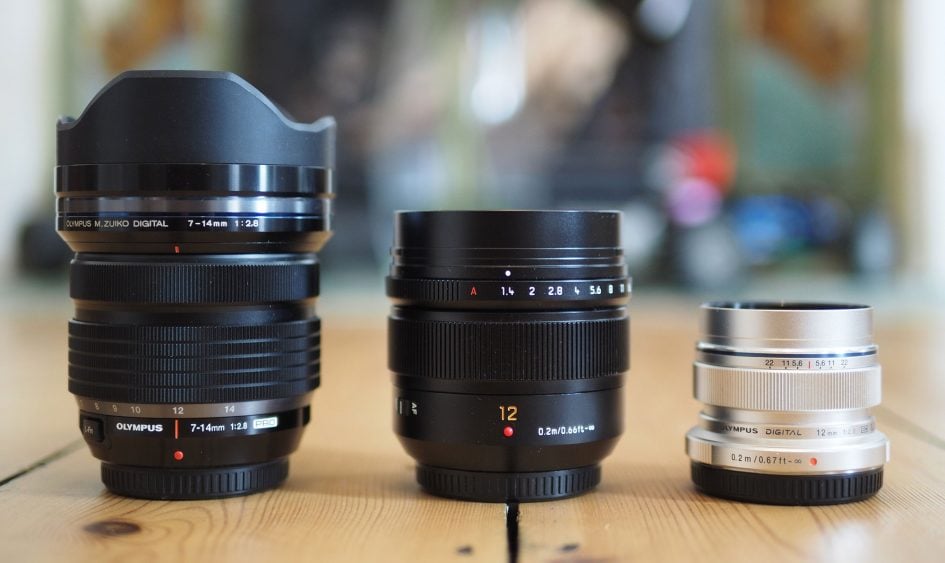
That same, the Summilux 12mm f1.4 is well little than the Olympus 7-14mm f2.8 zoom which measures 79mm in diam (no option to mount filters without a third gear-party adapter), 106mm in length and weighs 534g.
In terms of build prime, the Summilux 12mm f1.4 feels solid and buirdly, with its metal body boast dust and splash-proof construction; note my sample didn't have a rubber sealing connected the electron lens mount though, so I'm not sure how resistant it would be at this connect. The Olympus 12mm f2 isn't weather-sealed, although as a PRO lens, the 7-14mm f2.8 does enjoy environmental sealing.
Like new Leica Summilux collaborations, the manual focusing ring feels same smooth and nicely damped, specially compared to the little Olympus primes who's focusing rings can come across equally a little loose and scratchy in comparability. That aforementioned, the Olympus 12mm f2, the like the 17mm f1.8 and 7-14mm f2.8, features a manual focusing ring that can be pulled-back up the barrel a bit to reveal a focusing distance scale. When pulled-aft, these lenses offer direct and more exteroception adjustment of extremity focus. I should also contribute the zoom and focusing round connected the Olympus 7-14mm f2.8 also feel smooth and well-damped – IT's just the small Mount Olympus primes which sometimes evenfall fanny in this regard, especially after extensive economic consumption.
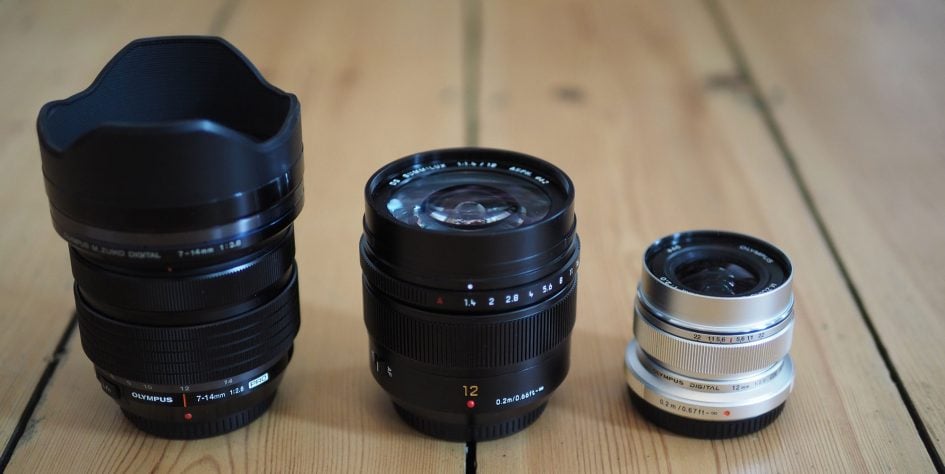
The focusing motor is compatible with bodies that support 240fps lens-drive and in my tests it certainly focused quickly and quietly on the bodies I tested IT with. But I should note it was no faster or quieter than the Olimbos 12mm f2 for stills photography. I hope to perform more tests for movie AF as this could be an reward of the Summilux 12mm along certain Lumix bodies.
Like the Summilux 15mm f1.7 and Nocticron 42.5mm f1.2, the Summilux 12mm f1.4 features an aperture tintinnabulation towards the front of the barrel, tagged with the standard Leica face. The aperture range of f1.4 to f16 can be manually chosen with the ring in third increments when affixed happening Panasonic Lumix G bodies, Beaver State set to A for electronic mastery by the camera. If you mount it on an Olympus dead body, the ring's place is completely ignored and the aperture control becomes amply operated away the trunk.
As noted earlier the Summilux has a somewhat all-inclusive 62mm dribble thread, substantially larger than the 46mm happening the Olympus 12mm prime. Leica supplies a circular lens hood of a continual depth which once mounted protrudes active 14mm from the conclusion of the barrel – modest protection against glare, simply I did appreciate the physical protection from potential knocks and kept it fitted at all multiplication.
Leica Summilux 12mm f1.4 optical construction
The Leica Summilux 12mm f1.4 employs 15 elements in 12 groups, including two aspherical lenses and two UED (Ultra Extra-Low Dispersion) lenses, along with a nine-blade aperture. This makes it untold to a greater extent complex than the 11 element / 8 radical / seven blade design of the Olympus 12mm f2.
The two-times field-reduction of Micro Four Thirds means the lens delivers a 24mm tantamount field-of-though that's one of my favourites of all lenses. Noticeably wider than plain-old 28mm with more exciting position, but without the extreme coverage of 20mm or ultra-wides. Here's how IT looks connected my accustomed Brighton test location, and don't worry, you're not going mad, the ferris wheel attraction has been taken down.

Above: Leica Summilux 12mm f1.4 on Lumix GX80 / GX85 at f2.8, 1/6400, 200 ISO
I also shot from this location with the Olympus 12mm f2 for my timbre comparison and as a side-note, found them delivering basically the same actual coverage – something that's shouldn't be taken for acknowledged even when two lenses quote the same focal distance.
The big optic difference between the Summilux 12mm and its varied rivals is course the focal ratio which, at f1.4, is the brightest 24mm equivalent lens for the Micro Four Thirds system. The Olimbos 12mm f2 and Samyang 12mm f2 are both one stop slower, meaning they'll need a one stop slower shutter or one stop higher ISO under the Same conditions. This gap broadens with the Olimbos 7-14mm f2.8 which is two stops slower and the Lumix G 7-14mm f4 which is three boodle slower. Note no of these lenses offers optical stabilisation, so you'll indigence a body with well-stacked-in stabilization to iron-out any wobbles and extend the slowest shutter for handheld work. I put-upon it on the Panasonic Lumix GX80 / GX85 and Olympus OMD EM1 and found I could exploit their body-based IS to handhold at shutters of half a second or sometimes slower even so.
Bright lenses really do into their have when shooting television, where there is a minimum shutter speed for normal usage. As such in low-growing light, IT's close to reconciliation the ISO against the maximum aperture and with f1.4 at your disposal, you'll be able-bodied to film at sensitivities one stop slower than the f2 lenses, two stops slower than the f2.8 lenses and three stops slower than the f4 lenses. This can make a big conflict to quality.
Bright apertures are also valuable to both stills and picture shooters for achieving shallow depth-of-field personal effects and even though 12mm / 24mm equivalent is a fairly wide lens with an inherently big profoundness-of-subject area than longer lenses, information technology is yet quite possible to savour some blurring. I wanted to see how the blurring compared in degree and choice against the Olympus 12mm f2 and Olympus 7-14mm f2.8 fructify to 12mm, so shot a subject around the minimum focusing distance with some fairly lights in the background. Present's the full conniption, followed by crops from the speed right niche from each lens at their utmost aperture (for starters!).
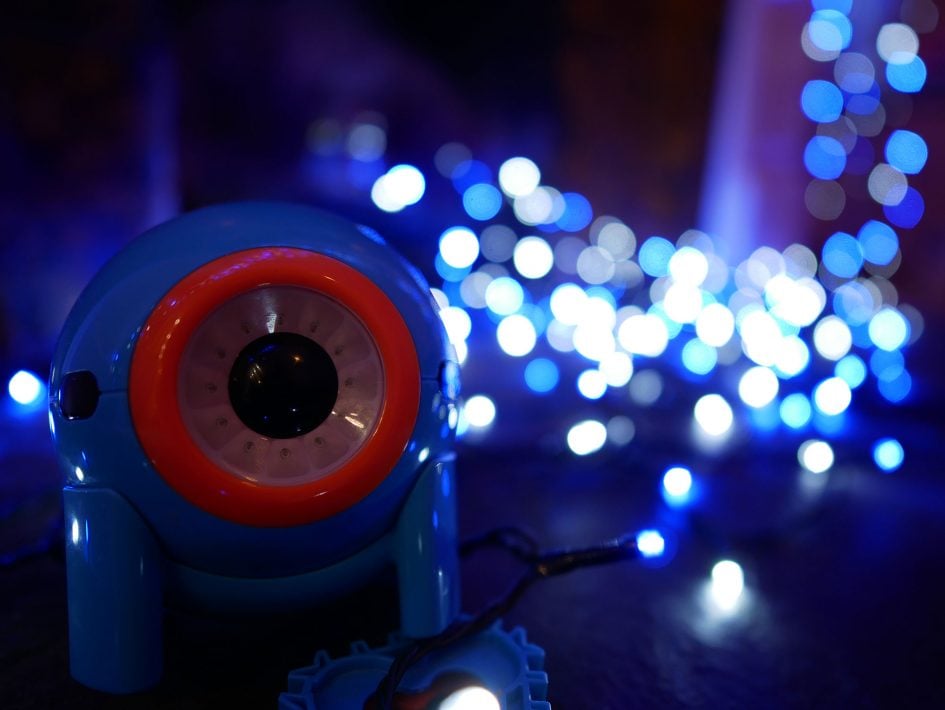
Above: Leica Summilux 12mm f1.4 on Lumix GX80 / GX85 at f1.4, 1/60, 200 ISO
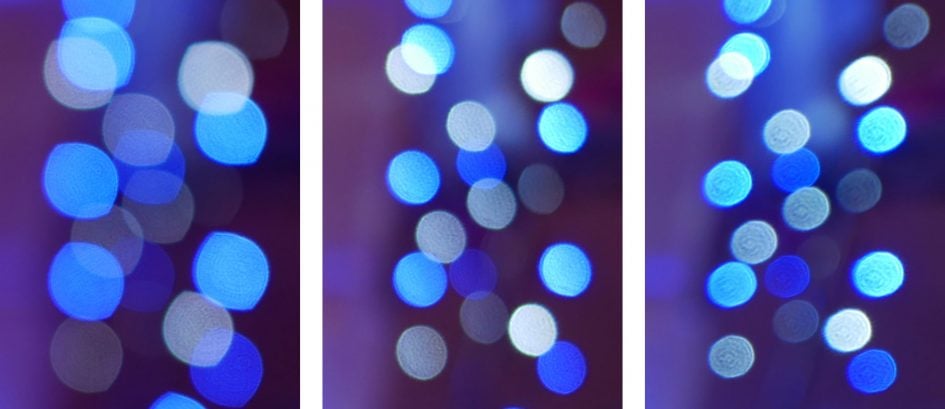
Preceding: bokeh crop. Leica 12mm at f1.4 (larboard), Olympus 12mm at f2 (middle) and Olympus 7-14mm at 12mm f2.8 (rightish)
As you'd gestate, when all lens is set to its maximum aperture, the Summilux 12mm f1.4 is delivering the shallowest depth-of-field with the largest bokeh blobs. They'Ra noticeably larger than those from the Olympus 12mm at f2, although the Olympus 7-14mm isn't too far behind its f2 twin even at f2.8. You'll too note some primes are rendering the cats-eye squashed oval shape at their maximum apertures, but from f2.8 onwards all three lenses are screening a shape closer to that of the actual LED bulbs in the fairy lights. Remember these lights are non staring point sources of light, which is why you're non beholding utterly oval or circular blobs.
Now here's a sequence comparison the same apertures lateral-by-side, and then clearly the Summilux is shown in isolation, joined by the Olympus prime at f2, then all three from f2.8 onwards. Piece all three lenses Menachem Begin to display much of the spheroidal shape of the lights as their apertures are bit by bit sealed, you'll detect the Summilux maintains slightly larger blobs despite the same focalisation distance. You'll too observance the impact of the aperture blades as to each one lens is closed, revealing a multilateral shape for the Summilux and many-sided shapes for the two Olympus lenses.
I admit the Light-emitting diode lamp shape proved less than philosophical doctrine for this equivalence, thus desire to micturate some alternative comparisons with more circular and operating room distant lights in the tense. I hope this first comparison still provides a useful flavour of the lens' rendering characteristics though.
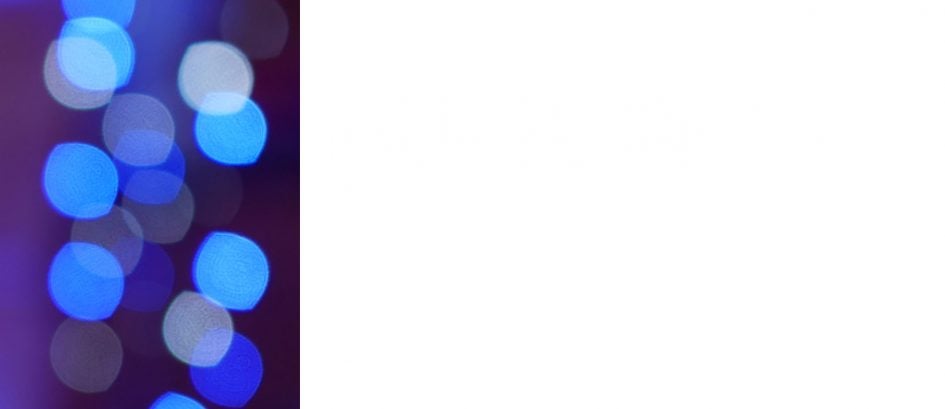
Above: bokeh snip. Left: Leica 12mm at f1.4
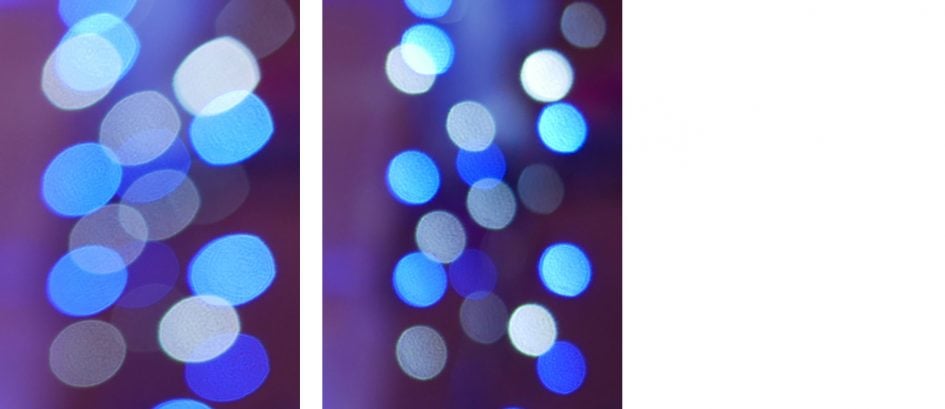
Above: bokeh crops. Near: Leica 12mm, middle: Olympus 12mm, both at f2
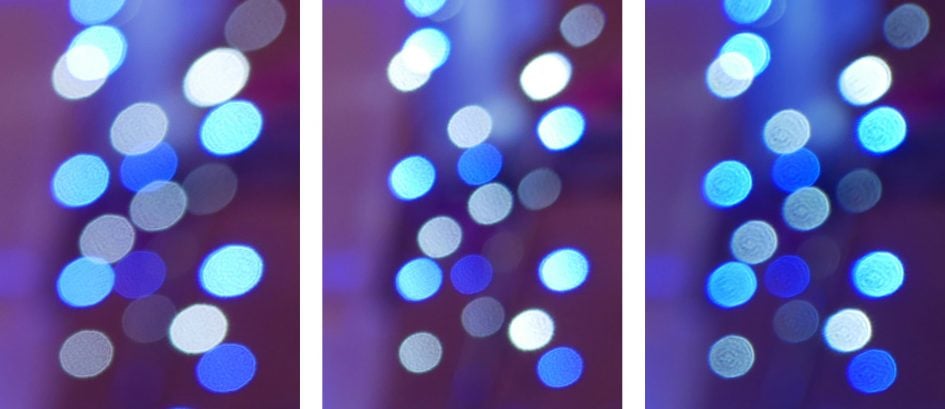
Higher up: bokeh crops. Left: Leica 12mm, middle: Olympus 12mm, accurate: Olympus 7-14mm at 12mm. All at f2.8
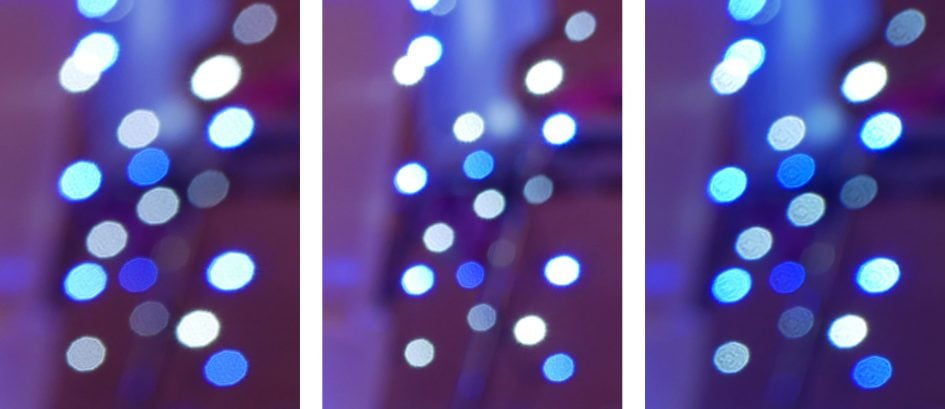
Above: bokeh crops. Left: Leica 12mm, middle: Olympus 12mm, right: Olimbos 7-14mm at 12mm. All at f4
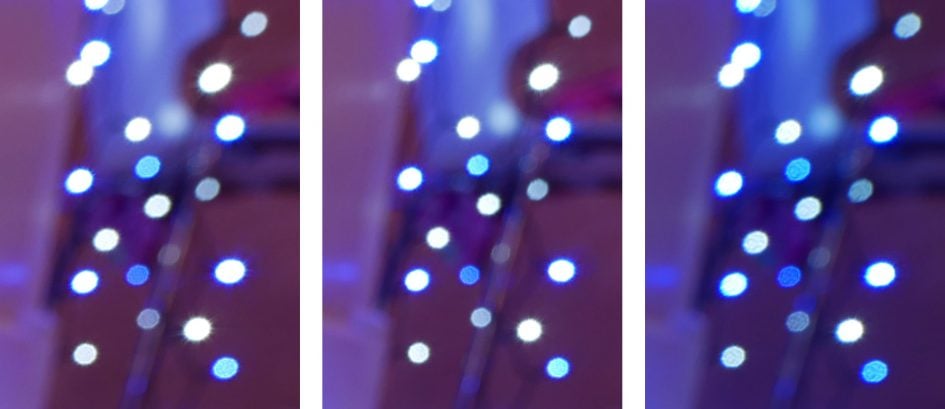
To a higher place: bokeh crops. Left-wing: Leica 12mm, middle: Olympus 12mm, right: Mt. Olympus 7-14mm at 12mm. All at f5.6
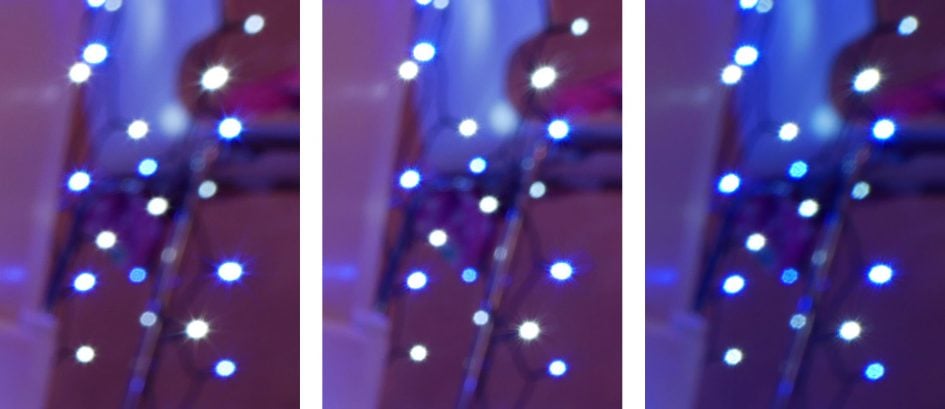
Above: bokeh crops. Left: Leica 12mm, mid: Mt. Olympus 12mm, right: Olimbos 7-14mm at 12mm. Completely at f8
Another important spec for a electron lens is the minimum centerin space, and interestingly the Leica Summilux 12mm f1.4, Olimbos 12mm f2 and Olympus 7-14mm f2.8 all quotation mark the same figure of 20cm. Any reviewers might leave it at that and assume their close-raised capabilities were identical, but it's critical to really try these things in practice. Away simply photographing a rule as close as I could focus with each lens and still enjoy a sharp image, I ground the Summilux could actually get a little closer than the Olympus 12mm prime and enjoy a slenderly greater reproduction as a result. As illustrated below, I captured a nonexempt 124mm crossways the breadth of the frame victimization the Summilux compared to 171mm with the Mount Olympus 12mm and 127mm with the Olympus 7-14mm zoom.

Above: nighest focusing distance. Left: Leica 12mm, midriff: Olympus 12mm, right: Olympus 7-14mm at 12mm
Here are a choice of images showing the Summilux 12mm f1.4 in practice shot near and removed, and in glary operating theater dim conditions.
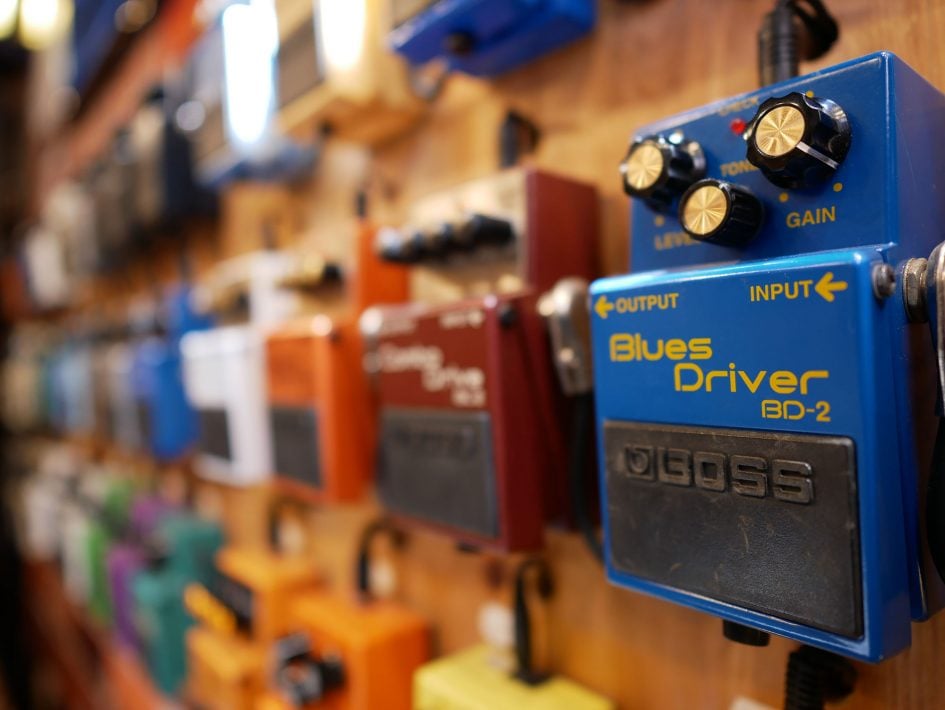
Above:Leica Summilux 12mm f1.4 on Lumix GX80 / GX85 at f1.4, 1/60, 200 ISO

Above:Leica Summilux 12mm f1.4 on Lumix GX80 / GX85 at f1.4, 1/80, 200 ISO

Above:Leica Summilux 12mm f1.4 on Lumix GX80 / GX85 at f1.4, 1/80, 200 ISO

Above:Leica Summilux 12mm f1.4 connected Lumix GX80 / GX85 at f1.4, 1/10000, 200 ISO
Finally for this page I'd like to compare the geometric optical aberration between the terzetto lenses. Information technology can be a challenge to isolate the sensory receptor carrying into action connected some systems, particularly Micro Foursome Thirds, as various corrections take point at a low level. But for this comparison I shot a chart at fairly close range using the RAW way on a Lumix GX80 / GX85 and processed the files in Adobe Camera Naked with all lens corrections hors de combat. These included distortion chastisement, although once more there could take in been extra compensation applied by the body at the RAW level.

To a higher place: geometric overrefinement. Left: Leica 12mm, middle: Olympus 12mm, right: Olympus 7-14mm at 12mm
From the images above, I'd say the leader is the Olympus 7-14mm f2.8 zoom set to 12mm, although the Leica Summilux 12mm f1.4 International Relations and Security Network't far behind. Both are in advance of the Olympus 12mm f2 which exhibits the most visible distortion here, barreling towards the edges, although it's still far from the worsened I've experienced and something that's easily corrected in post.
Now information technology's meter to comparability the acuteness crosswise the frame with each lens when shooting a distant real-life-time landscape. See how they comparison in my Leica Summilux 12mm f1.4 quality results or jump to my Leica Summilux 12mm f1.4 sample distribution images!
Check prices connected the Leica 12mm f1.4 at Amazon, B&H, Adorama, or Wex. Alternatively get yourself a copy of my In private Holy Scripture or treat me to a coffee bean! Thanks!Pages: 1 2 3 4
Leica DG 12mm f1.4 review
Source: https://www.cameralabs.com/panasonic-leica-dg-summilux-12mm-f1-4-h-x012-review/
Posting Komentar untuk "Leica DG 12mm f1.4 review"